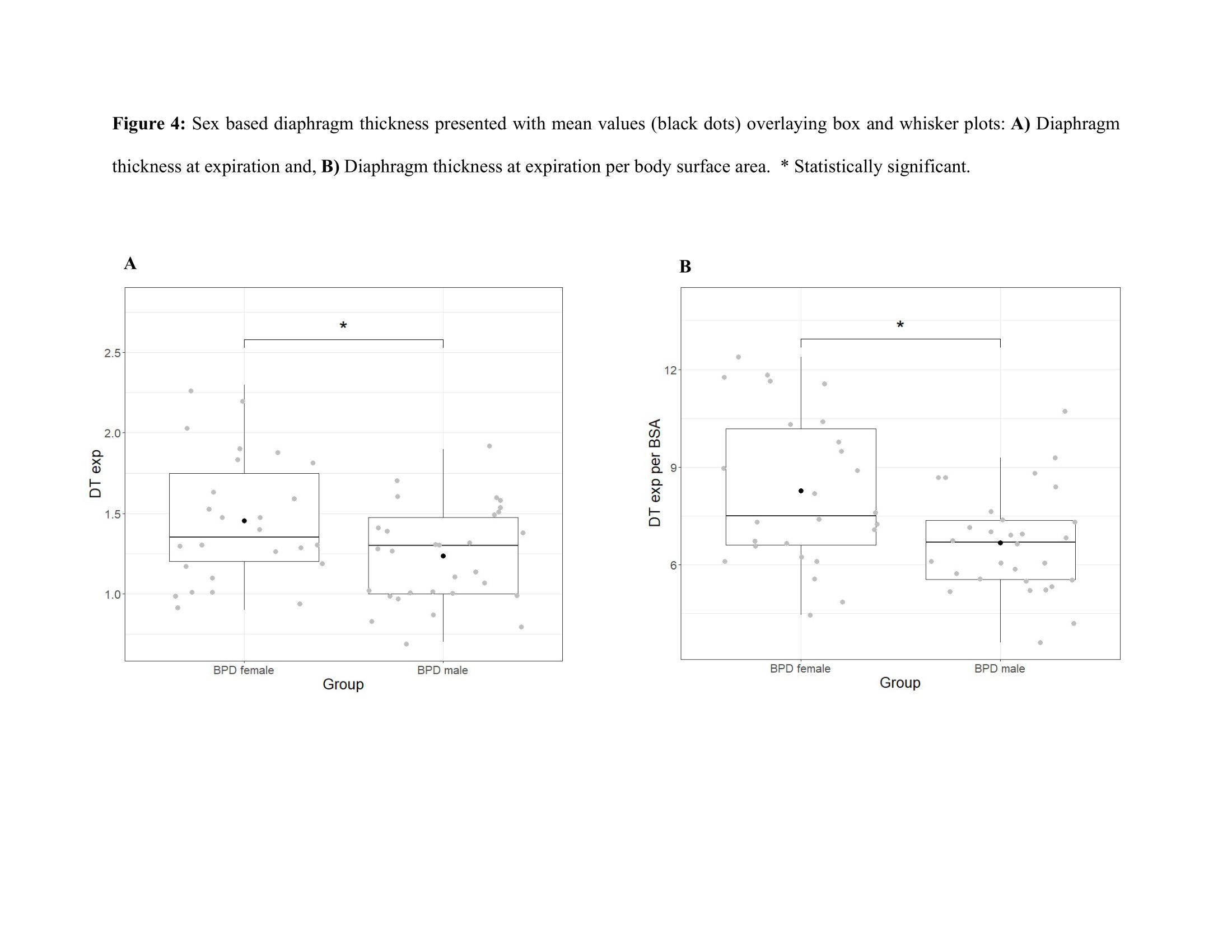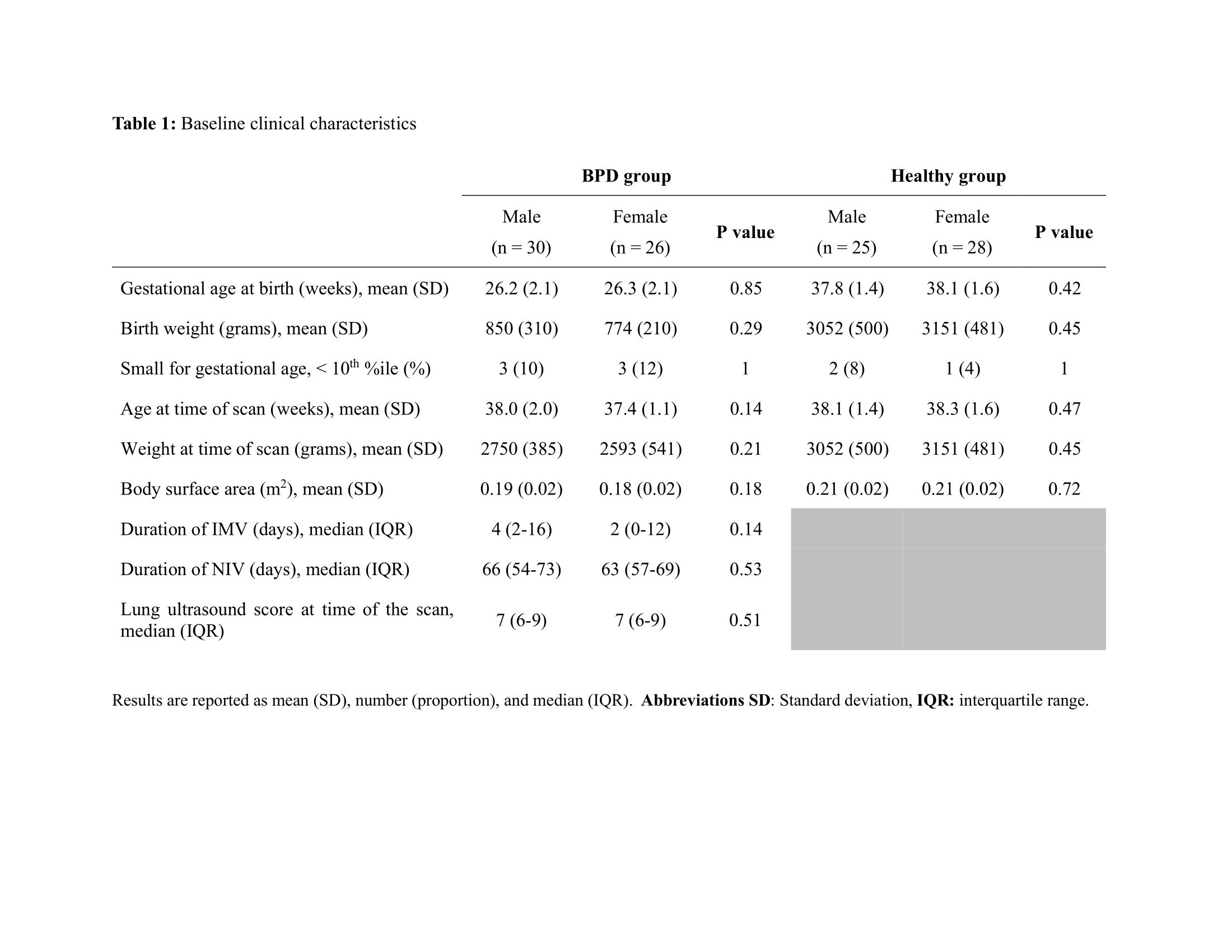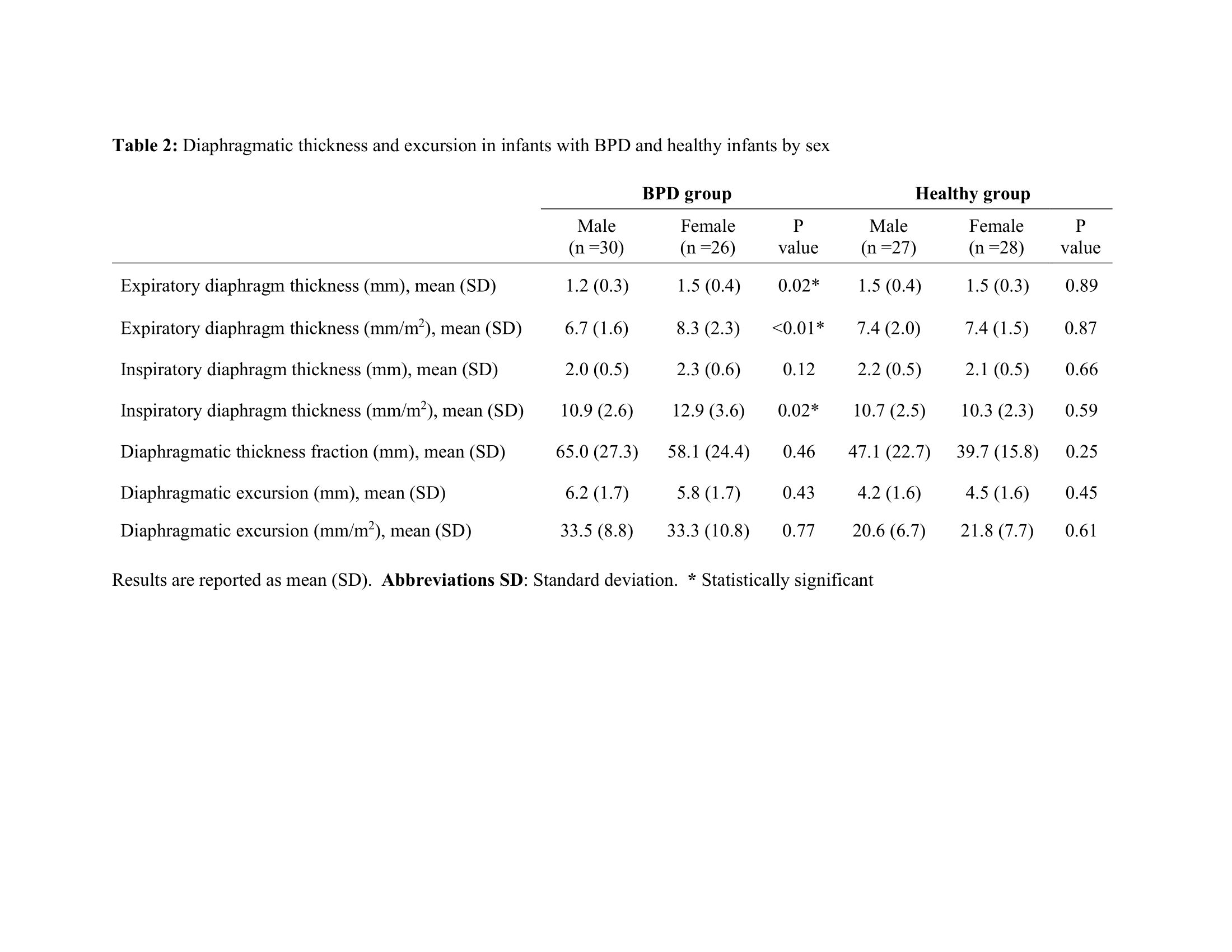Neonatology
Session: Neonatal Pulmonology - Clinical Science 2: Lung Imaging, Lung Function
206 - Sex-based differences in the sonographic characterization of diaphragm thickness in preterm infants with bronchopulmonary dysplasia
Monday, May 6, 2024
9:30 AM - 11:30 AM ET
Poster Number: 206
Publication Number: 206.2991
Publication Number: 206.2991
- TY
Telford Yeung, MD PhD
Neonatologist
Windsor Regional Hospital
Windsor, Ontario, Canada
Presenting Author(s)
Background: Male preterm infants have a disproportionately higher risk of bronchopulmonary dysplasia (BPD) compared to females. While sex-based disparities in lung development contribute to increased rates of respiratory distress syndrome, it's plausible that sex-specific variations extend to other structures like the diaphragm. In adults, the diaphragm shows structural and functional differences, with females having thicker diaphragms and greater resistance to exercise-induced fatigue than males. However, this sex-specific aspect of the diaphragm in preterm infants with BPD remains largely unexplored.
Objective: To investigate the impact of sex on diaphragm thickness during expiration in infants with BPD, as well as healthy near-term and term infants.
Design/Methods: We performed a secondary analysis of a prospective observational study to compare diaphragm thickness at end expiration (DTexp) in both female and male infants utilizing sonographic measurements. The study included infants with BPD and healthy near-term and term infants. To account for differences in anthropometric measurements, we calculated the DTexp as a ratio of body surface area (BSA). Statistical analysis was performed using R statistical software.
Results: Of the 111 infants included in the study, 54 (48.6%) were female. There were no significant differences in mean (SD) birth gestation [26.2 (2.1) versus 26.3 (2.1) weeks] and mean study age [38.0 (2.0) versus 37.4 (1.1) weeks] of male vs female infants with BPD. The mean (SD) DTexp [1.5 (0.4) mm vs 1.2 (0.3) mm, p = 0.02] and DTexp/BSA [8.3 (2.3) mm/m2 vs 6.7 (1.6) mm/m2, p < 0.01] were significantly thicker in female than male infants with BPD. In contrast, there were no significant differences in DTexp or DTins between sexes within the healthy control group. Moreover, there were no differences in diaphragm thickness fraction or excursion between males and females in the BPD or healthy groups.
Conclusion(s): Male infants with BPD exhibit thinner diaphragm thickness compared to female infants. Its implication on higher rates of BPD in preterm males is unclear, but this finding highlights the need for further investigation.



